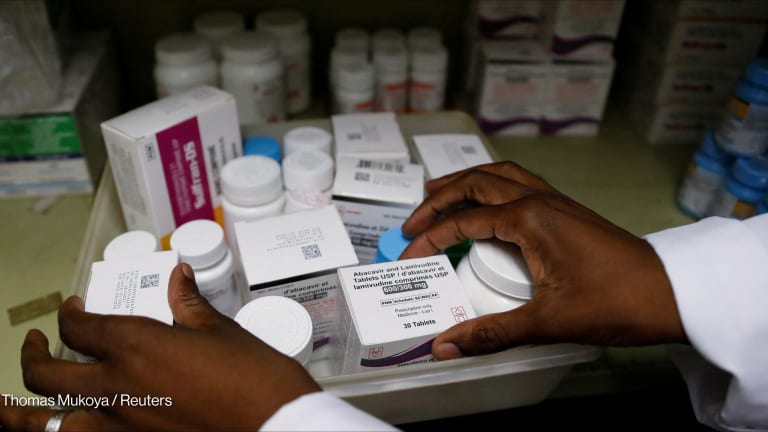Exploring USAID's 2020 country development cooperation strategies
USAID released 24 new country development cooperation strategies in 2020. Read insights from the country and regional overviews.
In its bid to achieve long-term development outcomes in the countries where it works, the U.S. Agency for International Development starts by developing a country development cooperation strategy, or CDCS, for each one, which serves as the blueprint for project and activity implementation there. Since 2018, the stated aim has been to drive the recipient country toward “self-reliance” — the capacity to plan, finance, and implement solutions to development challenges domestically. There were 24 new country development cooperation strategies released in 2020, which will serve as guides until 2024 or 2025. Devex has dug into them to identify common development objectives, priorities, and new initiatives that USAID will implement over the next five years. While tackling COVID-19 is not among the development objectives in most cases, the agency says it will continue to reevaluate each strategy to identify areas affected by the pandemic and make necessary adjustments. Africa USAID has long-standing partnerships with countries in Africa, often focused on boosting agricultural productivity; strengthening health systems; supporting democracy, human rights and good governance; increasing resilience; and responding to humanitarian crises. The same priorities are found in the new country development cooperation strategies for Ghana, Nigeria, Tanzania, Senegal, Rwanda, Madagascar, Malawi, and the region of southern Africa. According to Ghana’s CDCS, USAID will support key stakeholders to offer “a productive, healthy life to all its citizens” and achieve a “Ghana Beyond Aid.” Building on previous investments in market systems, USAID is preparing a new program to support the country’s agricultural market to be more efficient and sustainable in the provision and consumption of goods and services. By identifying and minimizing the root causes of market failure, USAID says it will support Ghana’s efforts to meet local demand and compete in global markets. With an estimated budget of $25 million to $50 million, the public tender is scheduled to be released in early March. In Nigeria, meanwhile, the focus is on cross-cutting strategic priorities such as good governance, conflict sensitivity, resilience, and inclusion to achieve “a healthier, more educated, prosperous, stable, and resilient Nigeria,” according to the latest strategy. One example is the recent USAID grant to mitigate violent conflicts by enhancing early warning and response structures. The grant is worth $7.8 million and has been developed under the Conflict Prevention and Recovery Program. It is also part of the New Partnerships Initiative looking to diversify and expand the USAID partner base. In Tanzania and Senegal, global health security, the improvement of human capital, and strengthening the business environment are common priorities. In particular, USAID is preparing a program to be awarded to two local organizations to improve the health, well-being, and protection of orphans, vulnerable children, and youths in communities with high HIV burdens in Tanzania, as well as an $88 million project for “improving health status and human capital” in Senegal. The only regional CDCS, for southern Africa, integrates the strategy for South Africa. This differs from previous strategies in which regional priorities were integrated with South Africa’s CDCS. The strategic goal over the next five years focuses on self-reliance through resource allocation, integration, and fostering partnerships with the private sector, governments, and citizens — termed a “partnership-based approach.” The strategy covers 11 countries, with a focus on government accountability, private sector partnership, youths, and inclusive and sustainable growth — priorities that are also found in the individual strategies for some of these countries. A recent example is a $14 million grant for governance strengthening in Madagascar. Madagascar was the only country with detailed COVID-19 funding information in its CDCS. In 2020, the United States provided $2.5 million in new COVID-19 funding, and USAID reallocated $4 million from maternal and child health, family planning, and water projects to combat the coronavirus. The total of $6.5 million in funding aims to strengthen government community surveillance systems, health communications, case management, and laboratory services. Asia Inclusion and sustainable partnerships are the main priorities across the three new country development cooperation strategies in Asia. India’s country strategy until 2024 aims to accelerate inclusive development that promotes regional connectivity for sustainable economic growth and that improves human development among marginalized populations. An example of this is an upcoming grant for up to $10 million under the TB Local Organizations Network, which seeks to use the expertise of local organizations to improve access to tuberculosis services among tribal populations. USAID will support Indonesia through four focus areas that intersect with the government's medium-term development plan: government effectiveness, human capital via education and health, inclusive economic growth, and environmental sustainability. In line with the governance focus, USAID is planning a program to support the government in its corruption prevention efforts by strengthening a culture of integrity for both the public and private sectors. As reported by the Indonesia Corruption Watch, the country experienced the highest state losses due to corruption in five years at 8.4 trillion rupees (US$614 million) in 2019. “Making corruption one of Indonesia’s most intractable challenges”, according to the USAID report.“ The announcement of the funding opportunity is anticipated for mid-March. The budget range is $4 million to $10 million dollars, according to the latest USAID business forecast. In Vietnam, the focus will be on increased inclusion through the participation of the government, private sector, and local organizations in economic competitiveness; prevention and control of infectious diseases; environmental security; and supporting people with disabilities affected by the Vietnam War and Agent Orange. Latin America and the Caribbean Six new strategies for 2020-2025 were released for Colombia, El Salvador, Guatemala, Jamaica, Mexico, and Peru. The objectives revolve around supporting government reform and sustainable economic growth. Challenges around the impact of unregulated migration are also integrated into the strategies for Colombia, El Salvador, Guatemala, and Peru. An example of this is the Venezuela Response and Integration Activity contract opportunity that USAID’s Colombia mission released in December. With an estimated ceiling of $160 million over a five-year period, the goal is to support social and economic integration for migrants and Colombian returnees in receptor communities in Colombia. Jamaica’s goals, meanwhile, focus on addressing high crime rates and violence among youths, building resilience to natural disasters, and controlling the HIV epidemic in the country. USAID will align with the objectives of the U.S. President's Emergency Plan for AIDS Relief by partnering with local NGOs and the private sector. USAID’s new strategy will also support Jamaican-led initiatives and domestic resource mobilization. Europe and Eurasia Governance and economic reform are the focus of the new strategies for Armenia, Azerbaijan, Georgia, Kosovo, Moldova, and North Macedonia. By promoting economic growth and instituting government reform, USAID says it aims to promote “Euro-Atlantic integration.” Through a grant assistance opportunity in North Macedonia released in January, USAID will award $750,000 for a program aiming to increase the levels of giving by companies, communities, and individuals to support the country’s development objectives and move toward self-reliance. In Kosovo, USAID released an early intelligence announcement for a Citizen Engagement Activity, with an anticipated cost of up to $5 million. It aims to strengthen civil society through a “people-centered approach” and government accountability. In the request-for-information notice, USAID reiterates the focus on the New Partnerships Initiative by potentially limiting the award to “local entities and locally established partners that have received less than $25 million in USAID funding.” USAID also announced last year a new bilateral development cooperation agreement with the government of Kosovo in support of its "journey to self-reliance” through supporting government accountability and leveraging new democratic and economic opportunities. Middle East The only CDCS released in the Middle East region in 2020 was for Jordan. USAID's primary focus is on economic growth, governance, the inclusion of women and youths, and social services. Another main focus is water security, with USAID supporting the government to improve water sector management, efficiency, and conservation. A couple of examples are the now-closed water governance tender and the latest opportunity in the business forecast on water efficiency and conservation. Raquel Alcega contributed to this piece. For access to USAID country strategies summaries and funding opportunities from over 850+ sources — combined with Devex Pro news content — sign up for Pro Funding or get in touch to learn about our Pro Funding group options.
In its bid to achieve long-term development outcomes in the countries where it works, the U.S. Agency for International Development starts by developing a country development cooperation strategy, or CDCS, for each one, which serves as the blueprint for project and activity implementation there. Since 2018, the stated aim has been to drive the recipient country toward “self-reliance” — the capacity to plan, finance, and implement solutions to development challenges domestically.
There were 24 new country development cooperation strategies released in 2020, which will serve as guides until 2024 or 2025. Devex has dug into them to identify common development objectives, priorities, and new initiatives that USAID will implement over the next five years.
While tackling COVID-19 is not among the development objectives in most cases, the agency says it will continue to reevaluate each strategy to identify areas affected by the pandemic and make necessary adjustments.
This story is forDevex Promembers
Unlock this story now with a 15-day free trial of Devex Pro.
With a Devex Pro subscription you'll get access to deeper analysis and exclusive insights from our reporters and analysts.
Start my free trialRequest a group subscription Printing articles to share with others is a breach of our terms and conditions and copyright policy. Please use the sharing options on the left side of the article. Devex Pro members may share up to 10 articles per month using the Pro share tool ( ).
Janadale Leene Coralde works as a contributing analyst for Devex. Based in Manila she reports on development donors activities and designs funding data visualisations. She has a degree in political economy, specializing in international relations and development, and has previously worked as a researcher for Chemonics, the REID foundation, and the Philippines House of Representatives.
Miguel Tamonan is a Senior Development Analyst at Devex, where he analyzes data from public and private donors to produce content and special reports for Pro and Pro Funding readers. He has a bachelor’s degree in Political Science with a Major in International Relations from the Polytechnic University of the Philippines.









